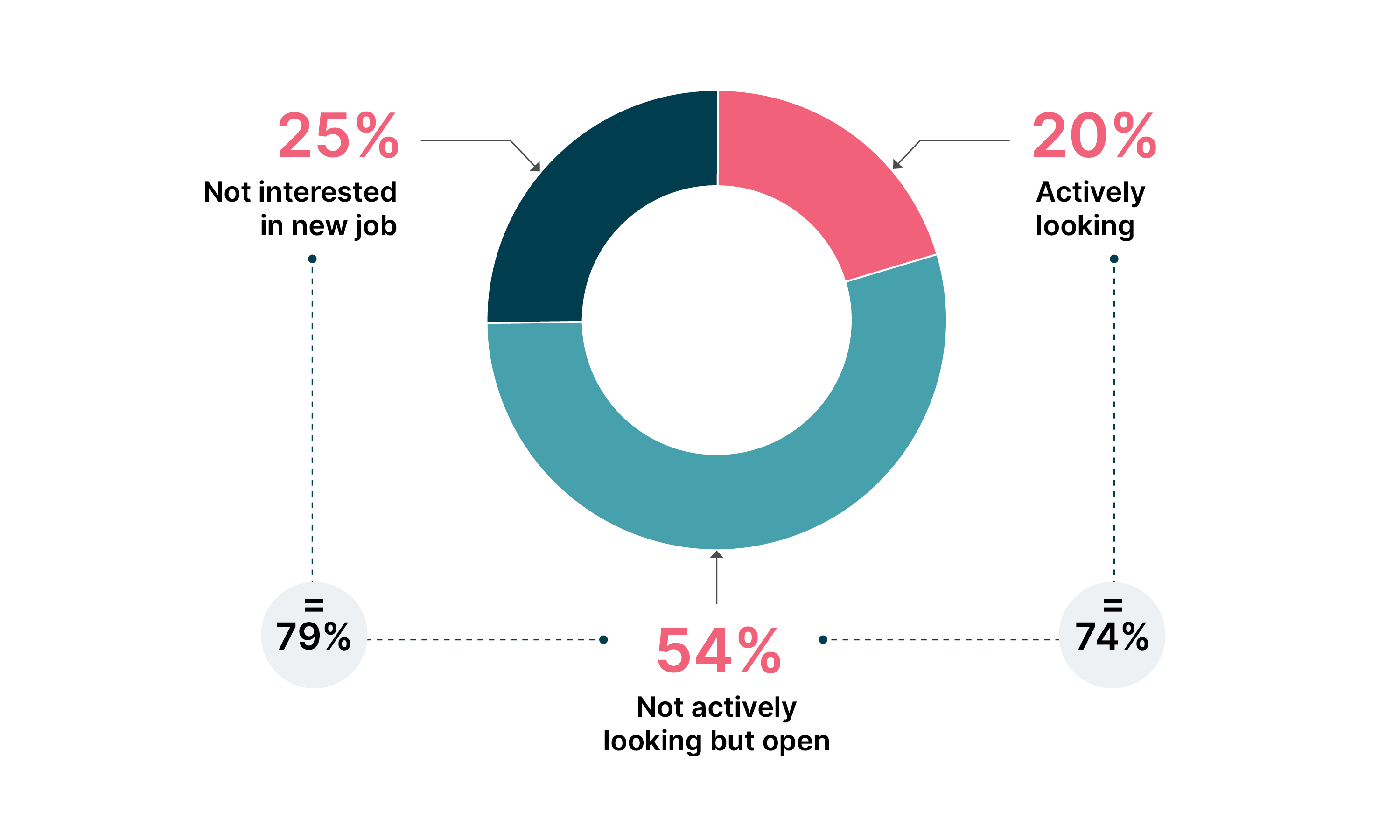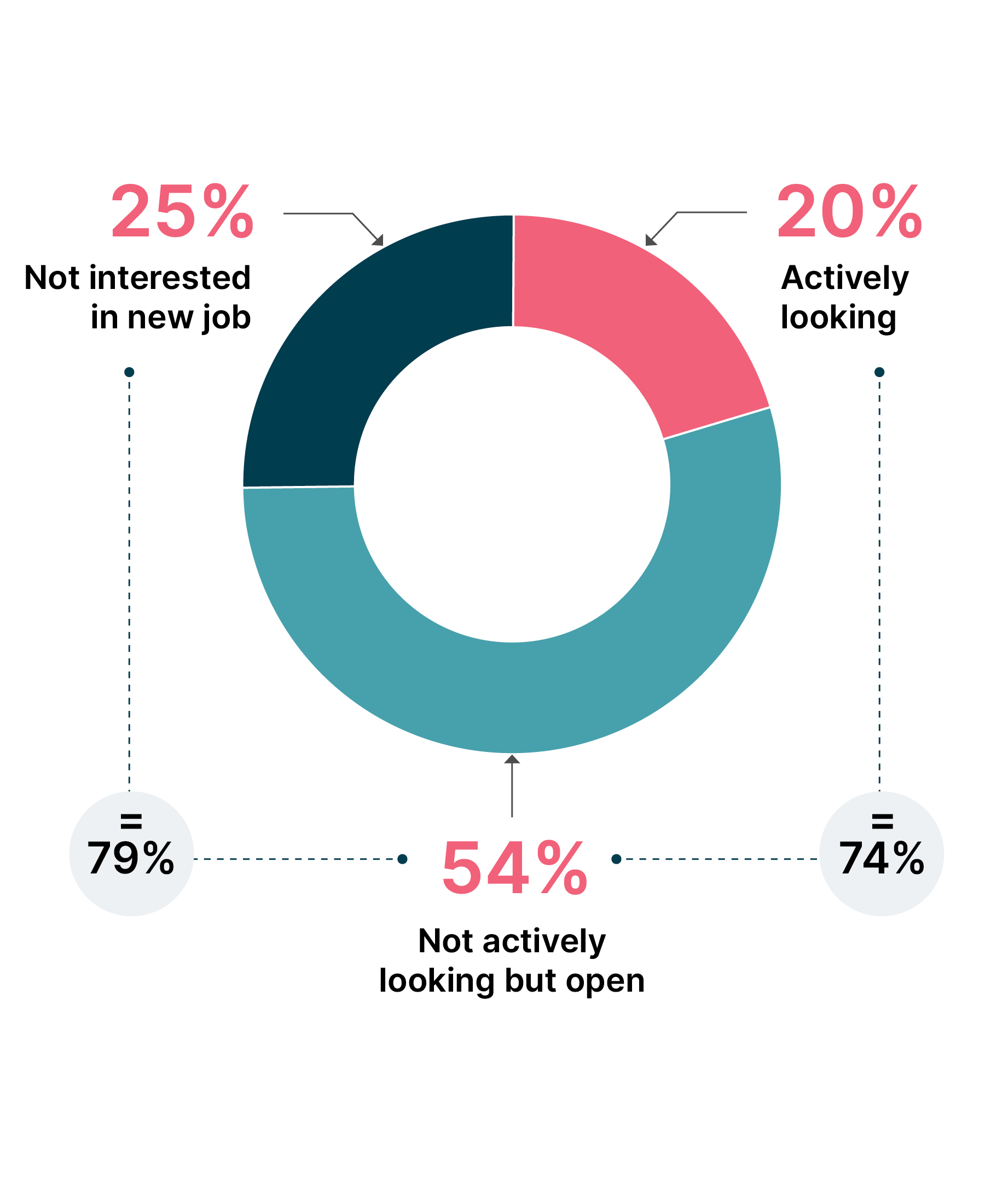Key takeaways:
Businesses of all sizes need top tech talent to compete today, and the best people are in short supply
It takes more than just a competitive salary to attract and retain skilled tech talent
Developers want to work for organizations whose values align with their own, where they can directly see how their work benefits people, and where processes and tools make it as easy as possible for them to do great work
Developer experience (DX) — the tools, processes and communications that developers have when working towards a goal — has a huge impact on job satisfaction as well as attracting and retaining talent
CEOs and other senior leaders can have a direct positive impact on DX
Digital talent makes the difference
Today, tech talent is one of the biggest competitive differentiators between organizations. The better your talent, the better you can turn data into value, build customer-pleasing digital products, respond to emerging opportunities and deliver exactly what today’s customers and users want from you.
But top tech talent is in short supply. According to the Harvey Nash Group’s 2021 Digital Leadership report, skills shortages are the highest on record, particularly around cyber security, big data and architecture. And the digital skills gap is only set to widen over the coming years.
Think this doesn’t matter to you because your developers are happy? Think again. According to research from Stack Overflow, in late 2021, a fifth of software developers were actively looking for new opportunities and more than half were open to offers.


So, for leaders, that raises one big question: What can we do to attract skilled developers and, even more importantly, keep them with us once they’re here?
The first step towards answering that question is determining what it is that today’s most skilled tech workers really want from their careers and from their employers.
What do top developers really want from you?
ActiveState’s 2019 Developer Survey found that 61.5% of developers spend just four hours or less a day writing code. Instead, many find their time consumed with meetings, dealing with friction and wading through bureaucracy.
This isn’t the best use of developers’ time; such tasks can end up feeling like barriers that restrict developers’ ability to do the best job and have the greatest impact.
In our experience, above all else, what developers want from their employers is the ability, freedom and empowerment to do the best job, in the smoothest and most logical way. And at its heart, that’s what developer experience (DX) is concerned with.
DX encompasses all aspects of a developer’s interaction with an organization, from workstations to tools, policies and systems. It’s shaped by a wide range of factors and interactions, but among the most prominent and influential are:
The right tooling. Developers want access to platforms and capabilities that make it as easy as possible for them to do their jobs well. Often, developers end up in frustrating situations where they’re forced to use specific tools or platforms, knowing there are more efficient options available. Each individual point of frustration caused by suboptimal tooling can appear insignificant. But, over time, those experiences can be enough to drive a developer to take their skills elsewhere
The right balance of empowerment and support. Skilled developers want to be part of cultures where they’re neither entirely left to their own devices nor constantly burdened by meetings and admin tasks. They need to know that support is there, but that it won’t drift into micromanagement or any other behavior that could stifle their ability to do their jobs effectively
A clear view of how their work delivers value. Developers work tirelessly to deliver strong customer and user experiences. But often, they don’t get to see the impacts of what they create. The software they create doesn’t have to change the world but it’s important that people can clearly see the real, human results of their efforts — even if that’s removing minor frustration for a small user base
Values that are aligned with their own. Developers — much like the rest of us — want to work towards missions they believe in. They want to see their own values mirrored in their organization’s, and see clear evidence that their organization is truly committed to upholding those values. They can’t just be attractive words on a web page
Together, those drivers help create strong, satisfying developer experiences. Strong DX can deliver business value in a wide range of ways. But crucially, it’s extremely helpful when trying to create an environment that naturally attracts talented development people, and keeps them with you.
How CEOs can improve and influence DX
Because senior leaders typically aren’t the ones making micro-level decisions about the platforms and tools development teams use, and of the way development workflows are managed, many often mistakenly assume that they don’t have any influence over DX.
But, in practice, DX is about so much more than those technical and process decisions. It’s concerned with every interaction a developer has with their organization and every aspect of their relationship with the company. When we look at some of the broader drivers of strong DX — those aligned around culture, values and empowerment — it quickly becomes clear that CEOs and the rest of the C-suite have an important role to play.
As CEOs and other senior leaders start playing an active role in DX, it’s important to recognize what DX isn’t.
Following the pandemic, amid the rise of remote working, many employers began monitoring developer performance at a granular level — measuring performance purely on output rather than concentrating on value. That kind of microscopic process and workflow monitoring are counterproductive and far more likely to diminish DX than improve it.
Instead, leaders stepping into the DX space should apply the lessons they’ve learned about customer experience (CX), and approach DX in the same intentional, design-driven way.
DX and CX require similar skillsets and approaches — they both require decision-makers to put themselves in the shoes of another party, identify every point of frustration for that person, then reimagine and redesign experiences to better meet their needs and expectations.
Four things you can start doing to improve DX today
As the old adage goes, you can’t change what you can’t measure. At companies such as Etsy and Spotify, developer effectiveness is viewed as a proxy for how much job satisfaction their developers have. That means they track how quickly their new hires make productive contributions on projects. Both companies have been able to reduce this time by introducing a focus on DX.
So, what sort of things can leaders do today to help improve DX, attract top tech talent and increase developer effectiveness? Here are four steps you can start today to help your organization deliver superior DX:
- Build and lead a culture of transparency
With conditions constantly changing and diverse demands to meet, no organization can practically expect to enable 100% friction-free working. But, when those points of friction appear, it’s important that teams across the organization understand why they’re there.
By being transparent about specific decisions and why they’ve been made, you can help prevent friction from turning into frustration. For example, if your developers have to work in a legacy language that they don’t particularly enjoy, clearly articulating why that’s the case and how you plan to change the situation in the future can go a long way towards improving their experiences.
However, your words need to be backed up by actions. If you set an expectation that things will improve in the future, your developers also need to be able to see progress happening. If you don’t they’ll quickly lose confidence that you’re invested in improving their working experiences.
- Deliver on the promises of your employer brand
Your employer brand isn’t just a tool for attracting great talent — it’s a window into employee experiences at your organization. Whatever you say you’re doing for your employees needs to be true or your teams will quickly lose faith.
For example, if your values and mission state that you’re actively driving towards achieving certain social goals, you need to ensure that’s really happening and that developers have avenues to contribute towards those goals. If top developers don’t feel like you’re adhering to pre-employment promises, they’re more than happy to move to another employer who will
- Tackle complex and convoluted workflows head-on
Optimizing processes and workflows isn’t just in the best interests of developers — it can benefit your entire organization and help you improve performance against a huge range of key metrics.
By taking steps to reduce bureaucracy, challenge entrenched processes and seek out inefficient processes across the organization, you can make it easier for developers — and everybody else — to do their jobs, and improve experiences while increasing agility, revenue, and more.
One example of this is Spotify, which created an open-source developer portal platform, Backstage, based on software templates, which enables it to unify infrastructure tooling and provides consistent and centralized technical documentation. The plugin architecture allows for extensibility and adaptability into an organization's infrastructure ecosystem.
At Thoughtworks, we tackled this by creating the award-winning NEO self-service developer experience portal. It unifies and streamlines all the platform capabilities to help developers to accelerate application and product development and increases the effectiveness of Thoughtworks’ development teams.
- Empower your skilled people to shape your strategy
If the skills and capabilities of top tech talent are among the most valuable assets an organization can possess today, it makes sense to make small adjustments to your strategy around those skills, to maximize their impact.
Developers want to work in ways that make the most of their skills — and that’s in your best interests too. By building the skills and preferences of developers into your strategic digital and software decisions, you can improve DX, while setting yourself up for success and improving the quality of the software you create.
Those are just a few of the ways that leaders can influence and improve DX. If you’re a more technically-minded CEO and you don’t mind getting deeper into technical detail and strategy, there are many more improvement levers for you to explore.
Better DX. Better talent. Stronger business.
You want skilled developers. And skilled developers want convenient, intuitive working experiences at organizations where they feel like they can make a difference. Paying a top salary is a good start, but if you really want to attract and retain the best tech talent long-term, you need to deliver superior developer experience.


















